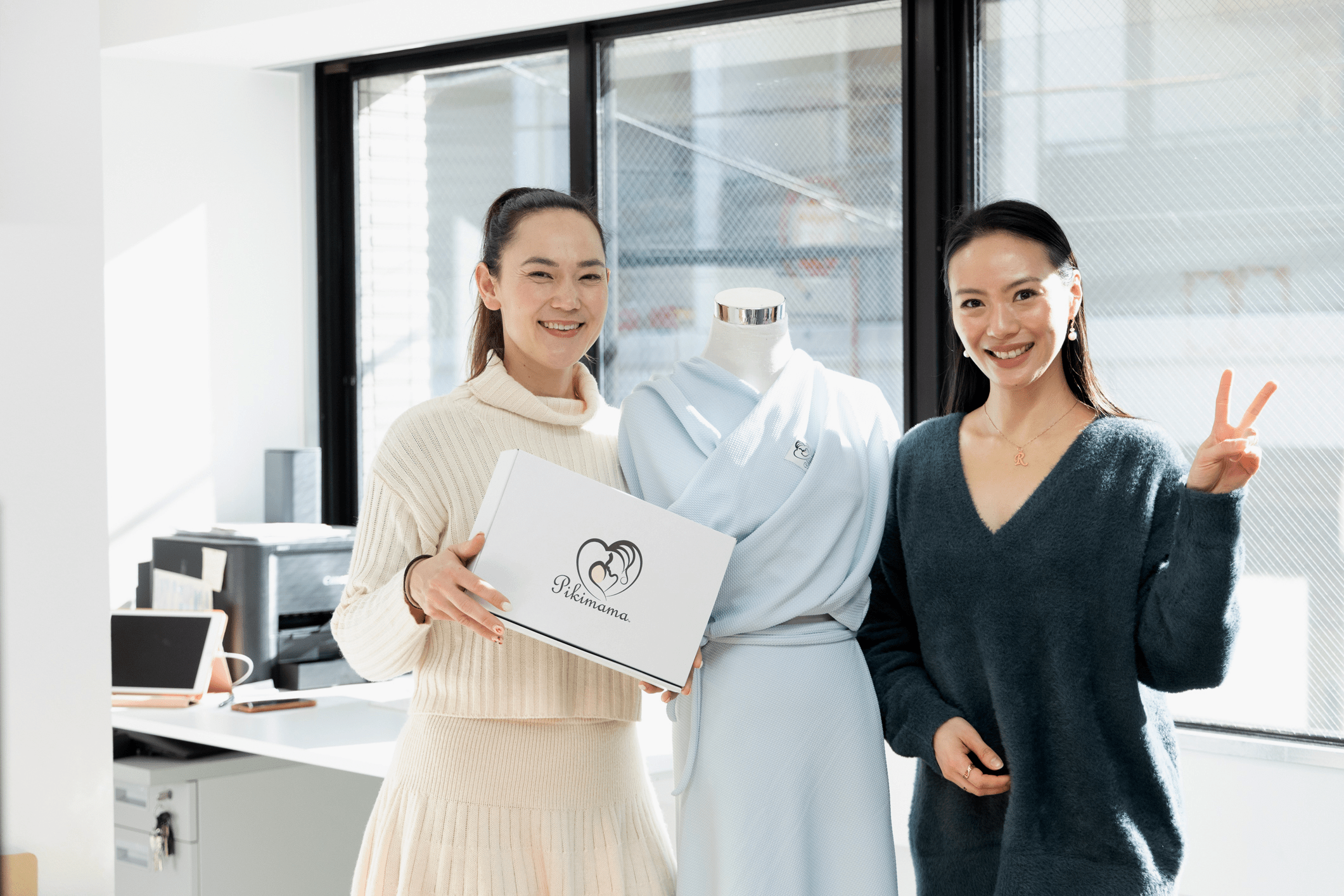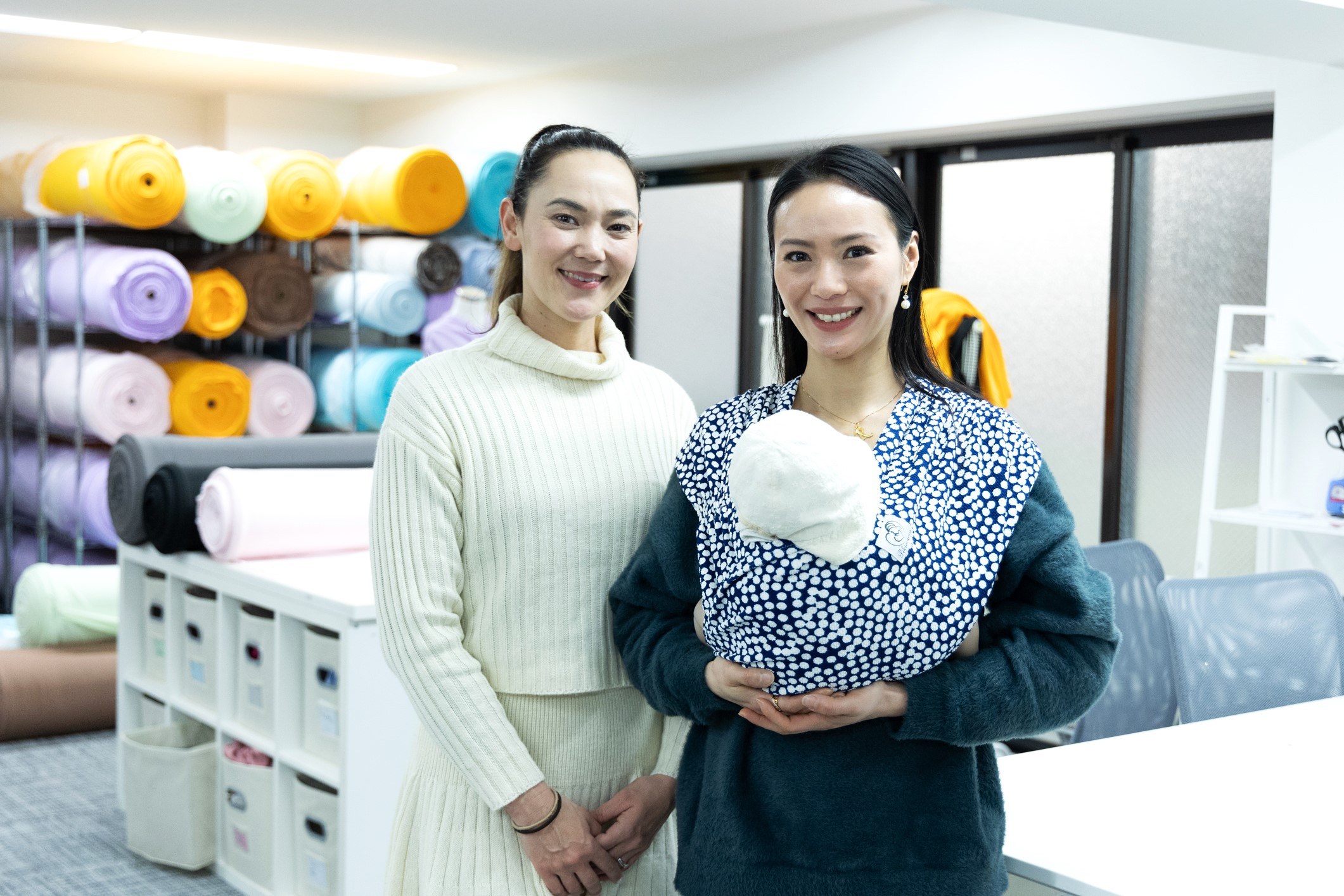The Gion (祇園) district of Kyoto is famous for its nostalgic appeal as a place offering visitors a historic atmosphere steeped in the world of traditional Japanese culture and arts. I spent a couple of nights in Kyoto recently and a friend invited me to stay at Sowaka, a charming hotel in the Gion-Yasuka district. The hotel is situated just a 3-minute walk down the street from one of the most popular tourist destinations in the entire region, the Yasaka Jinja shrine.
Besides its ideal location to begin exploring Kyoto, I discovered that Sowaka is elegantly designed as a place for people to relax and tap into their inner spirituality to explore the rich history of Japan’s ancient capital while enjoying modern metropolitan conveniences.
In this article, I share a review of my experience at Sowaka and its restaurant, La Bombance Gion.
If you are planning a trip to Kyoto and would like to stay at Sowaka, do not hesitate to contact me! I can introduce you to the hotel owners. 🙂
京都の祇園は、日本の伝統文化や芸術の世界に浸りながら、歴史的な雰囲気が味わえるノスタルジックな場所として有名です。先日、京都に2泊3日滞在した際、友人に誘われて、祇園・八坂にある魅力的なホテル「そわか」に宿泊しました。このホテルは、この地域全体で最も人気のある観光地のひとつである八坂神社から、歩いてわずか3分のところに位置しています。
「そわか」は、京都観光を始めるのに理想的なロケーションにあることに加え、人々がリラックスして内なるスピリチュアリティに触れ、日本の古都の豊かな歴史と現代の大都市の利便性を満喫できる場所として、エレガントに設計されていることがわかりました。
今回の記事は、「そわか」とそのレストラン「La Bombance祇園」での体験レビューを紹介したいと思います。
もし、京都への旅行を計画されていて、「そわか」に泊まりたい方は、私にご連絡ください!ホテルのオーナーをご紹介いたします。ご遠慮なくお問い合わせください。

もし、京都への旅行を計画されていて、「そわか」に泊まりたい方は、私にご連絡ください!ホテルのオーナーをご紹介いたします。ご遠慮なくお問い合わせください。
Table of Contents
- Small Luxury Hotel: Sowaka
- スモールラグジュアリーホテル:そわか
- The Lounge
- ラウンジについて
- Main Building: A Museum of Historical Architecture
- 本館:伝統的建物の博物館
- Annex Building: Modern Japanese Design Inspired by Sukiya
- 新館: 数寄屋をモチーフにした和モダンのデザイン
- The Restaurant: La Bombance Gion
- レストラン: ラ・ボンバンス祇園
- Last Reflections: A Deep Connection to Kyoto’s History, Architecture, Traditional Culture, and Local Products
- 最後に。。。京都の歴史、建築、伝統文化、特産品との深いつながり
Small Luxury Hotel: Sowaka
スモールラグジュアリーホテル:そわか
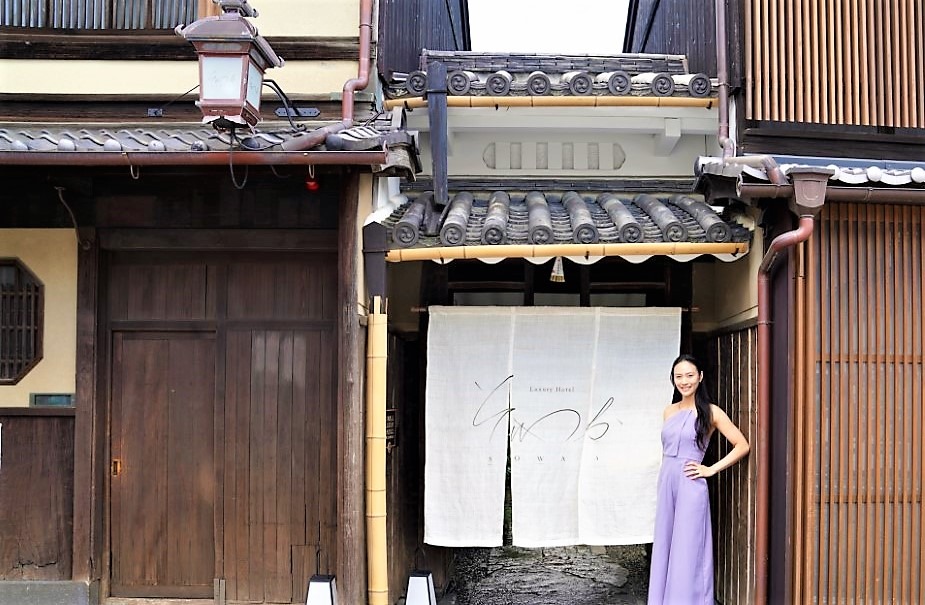

When I first arrived to the hotel, I was a bit confused about where the entrance was. SOWAKA has been verified as one of the “Small Luxury Hotels of the World” (SLH). However, unlike many Western luxury hotels with grand entrances, the entrance to SOWAKA seemed to be just a small alleyway covered with a simple white curtain (暖簾 noren, meaning “warm curtain”) often used for the entrances of restaurants and stores in Japan.
This perhaps unusual entrance is your first step into Kyoto’s history. Gion is renowned for its high concentration of traditional wooden machiya houses, and SOWAKA is recognized as a kyo-machiya because its main building was restored from a ryotei (traditional Japanese restaurant) first constructed in the 1910s. Due to the fact that property taxes were formerly based upon the size of street frontage, many houses were built with narrow facades only a few meters wide, but extend up to twenty meters in from the street! Pretty clever, if you ask me.
初めてホテルに到着したとき、入り口がどこにあるのか、ちょっと戸惑いました。「そわか」は、「スモール・ラグジュアリー・ホテル(SLH)」に加盟しています。しかし、欧米の高級ホテルが立派なエントランスを持つのとは異なり、SOWAKAのエントランスは、日本のレストランや店舗のエントランスによく使われるシンプルな白いカーテン(暖簾)で覆われた小さな路地に過ぎないように思えたのです。
外国人にとって珍しい玄関口は、京都の歴史に触れる第一歩となります。祇園は木造の町家が多いことで知られていますが、「そわか」の本館は大正時代に建てられた元の老舗料亭を復元し、京町家として認定されています。昔は固定資産税が間口の広さによって決められていたため、数メートル幅の狭いファサードでも、道路から20メートルも奥に入った家が多くありました。なかなか賢いですね。
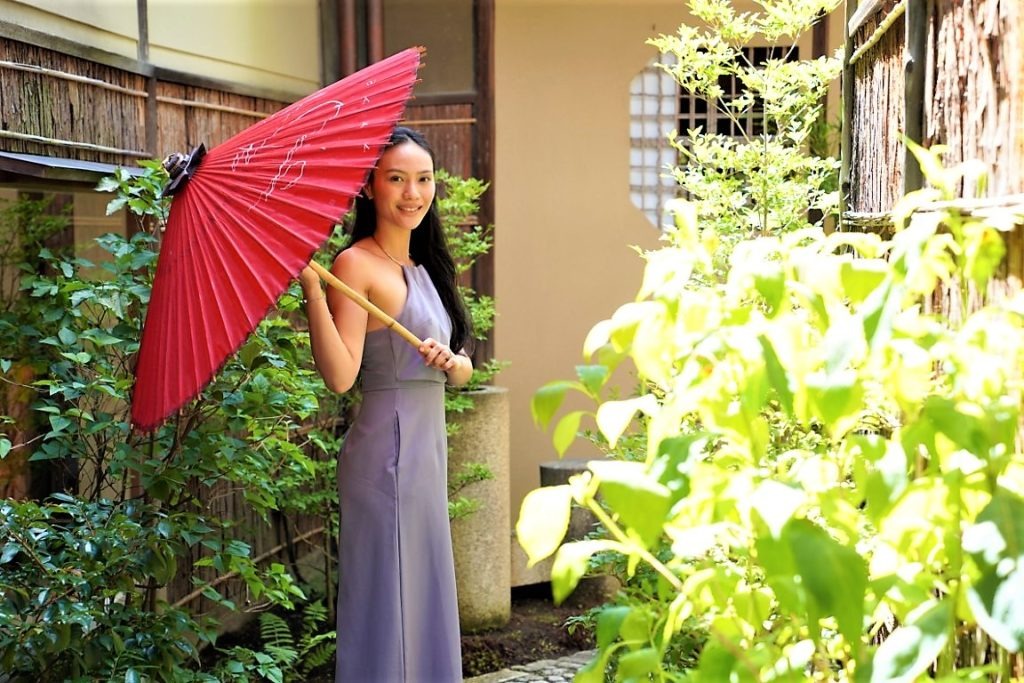
暖簾をくぐり、ホテルの中に入ると、豊かな緑に包まれます。
The Lounge
ラウンジについて
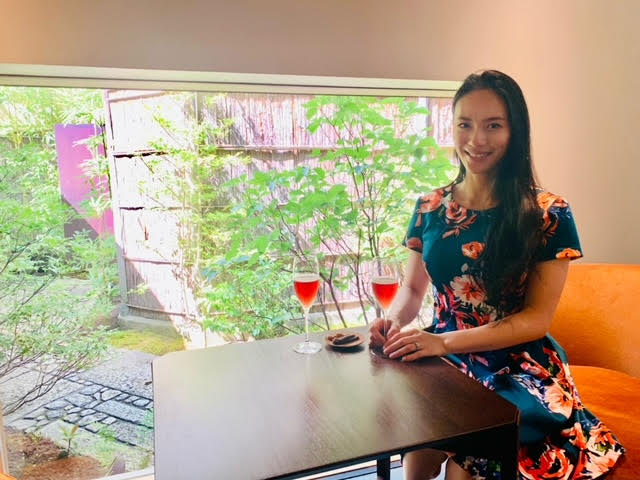
到着するとホテルのスタッフが出迎えてくれ、ラウンジに招待されてウェルカムドリンクをいただきました。
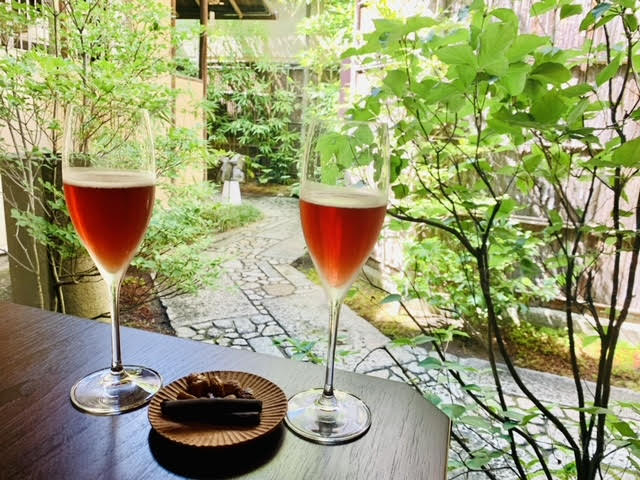
アルコールとノンアルコールの中から好きなものを選ぶことができます。私が訪れた時は、シャンパン、自家製梅酒、レモネード、水出し緑茶の中から選ぶことができました。もちろん、何を選んだかは写真で一目瞭然です(笑)。
After enjoying our welcome drink, we were given a tour of the hotel and our rooms.
The lounge area is open to all guests to use freely during their stay. It was a nice place to relax and read some of the books curated by the hotel on Japanese culture and architecture, or to meet with friends and plan our sightseeing route for the day.
Interestingly, as SOWAKA preserves the historical architecture of the ryotei, the lounge area is built upon the original kitchen.
ウェルカムドリンクを楽しんだ後は、ホテル内と客室を案内してもらいました。
ラウンジエリアは、滞在中、すべてのゲストが自由に使えるようになっています。日本の文化や建築についてホテルがキュレーションした本を読みながらリラックスしたり、友人と会ってその日の観光ルートを考えたりするのに、とてもいい場所でした。
興味深いのは、「そわか」が料亭としての昔風の建物を保存しているため、ラウンジエリアは料亭時代のキッチンの上に作られていることです。
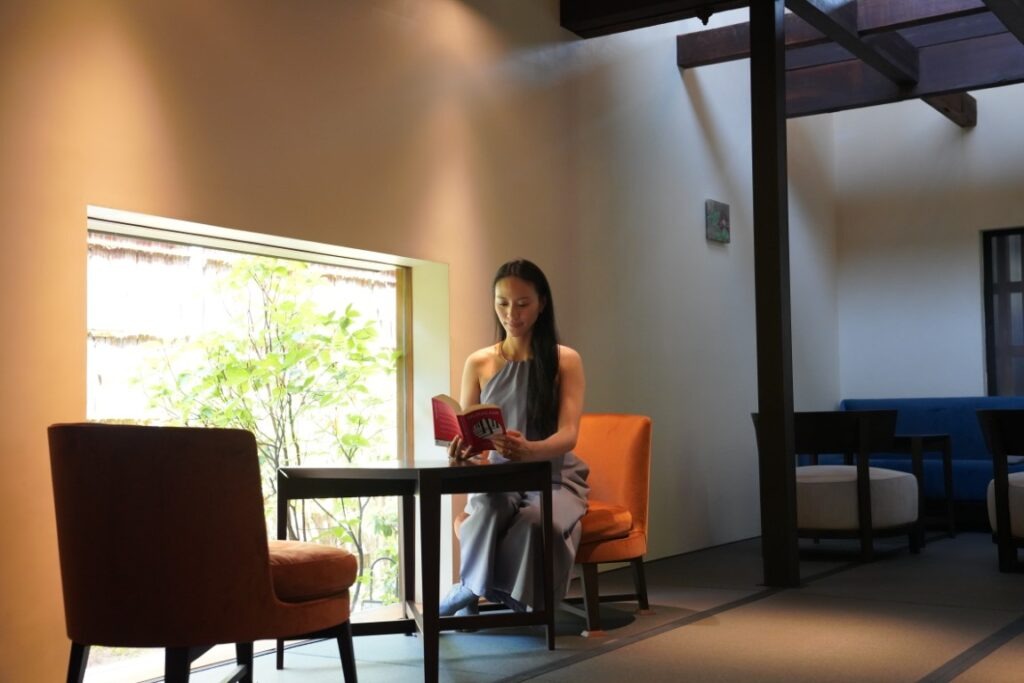
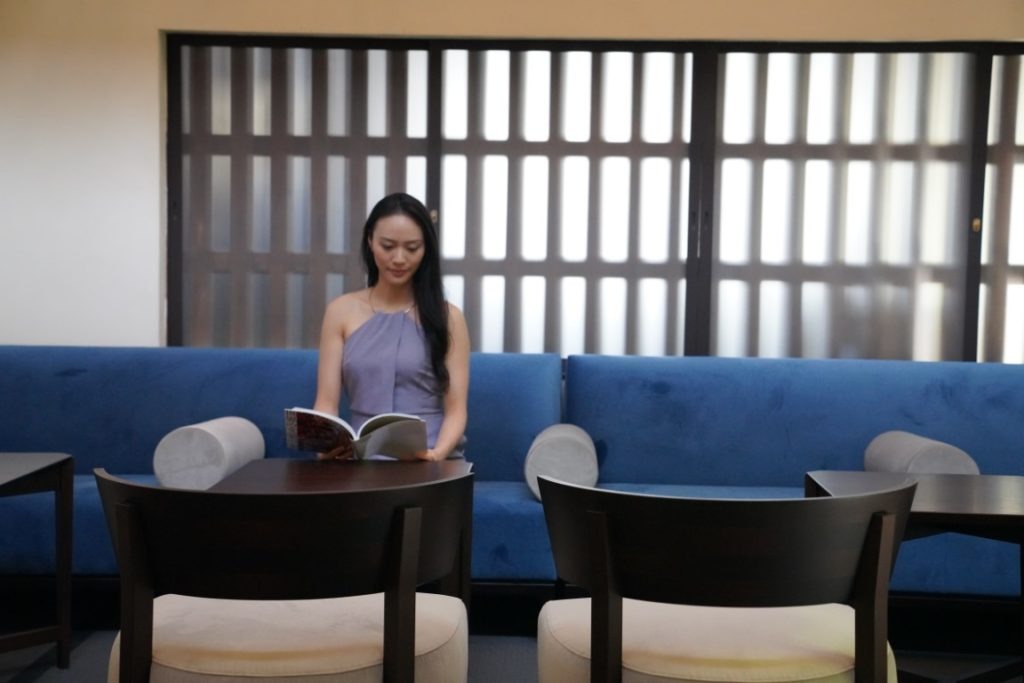

シックなラウンジで読書を楽しむ。

ラウンジに用意された様々な書籍で、京都や日本建築、ホテルの歴史について学ぶことができます。
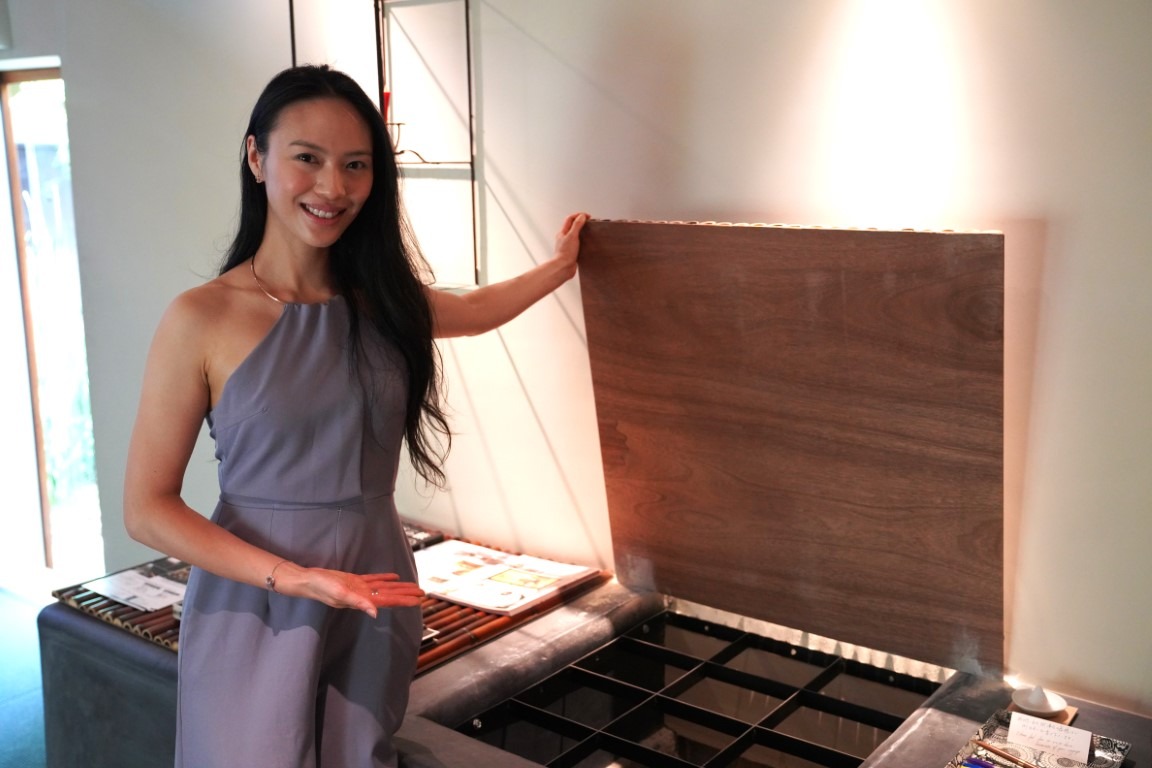
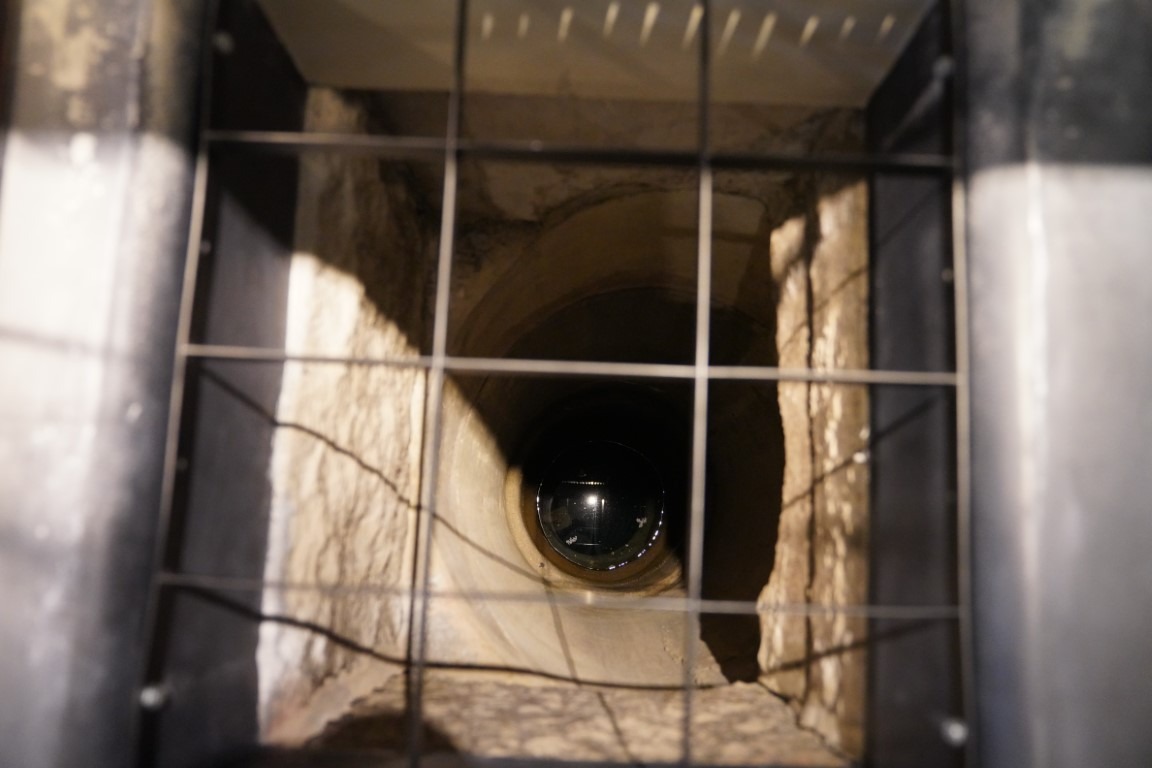
調理に使われていた厨房の井戸は、今もホテルに保存されています。
The Kyoto basin is well-known among the Japanese to contain an abundance of pure, clear groundwater. SOWAKA continues to use the natural water drawn from beneath the hotel. In Japanese legends, the waters of Kyoto are said to possess spiritual power, especially the sacred Gion water of Yasaka Shrine, located near the hotel. Kyoto’s soft groundwater has extremely low levels of calcifying ions, and is often credited for the beautiful, clear skin of women in the region, including the geisha and maiko. It is also said to have a delicate, smooth taste, which contributes to the high quality and slight tendency towards sweetness of local sake breweries.
京都の盆地には、清らかな地下水が豊富にあることは、日本人にはよく知られていると思います。「そわか」では、その地下から汲み上げた天然水を使い続けています。 日本の伝説では、京都の水には霊力があるとされており、特にホテルの近くにある八坂神社の祇園水は神聖な水とされています。京都の軟水は石灰化イオンが極めて少なく、芸者や舞妓など京都の女性の肌が美しくキメが整っているのは、この水のおかげだと言われていますよ。また、繊細でなめらかな味わいが特徴で、これが地酒の品質の高さや、やや甘口の傾向にもつながっていると言われていることもあります。
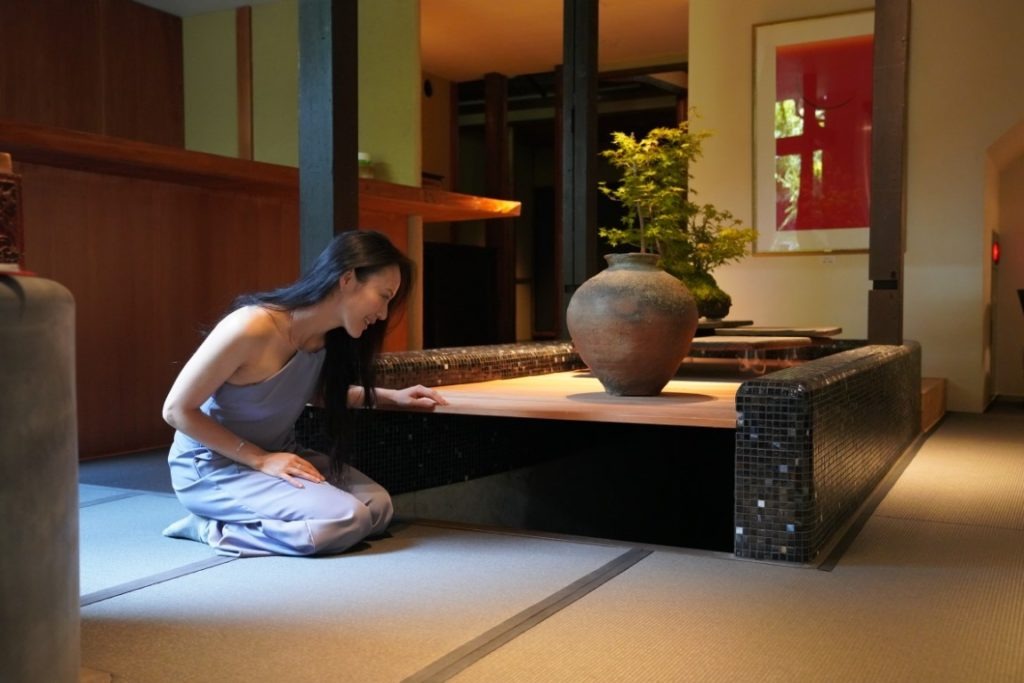
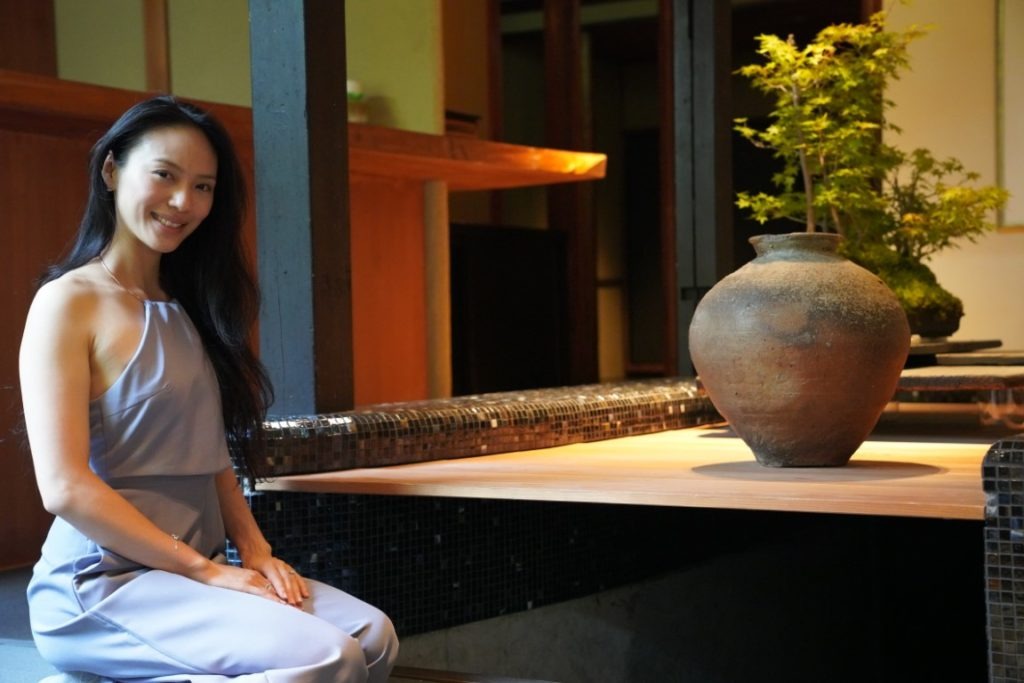
厨房の食品庫の入り口は保存され、芸術的な装飾が施されています。中を覗くと、地下に続く階段が見える!
Main Building: A Museum of Historical Architecture
本館:伝統的建物の博物館
The ryotei restaurant that closed its doors in 2012, was built in the traditional sukiya Japanese residential architectural style (Sukiya-zukuri, 数寄屋造り) by tea ceremony masters. Suki means “refined, well cultivated taste and delight in elegant pursuits,” especially in reference to the enjoyment of the exquisitely performed tea ceremony. In the historical definition, a sukiya denoted a building with a tea ceremony room (known as a chashitsu), but later came to indicate a style of designing buildings based on tea house aesthetics more generally. The essence of sukiya is the intention of creating modest, rustic spaces that not only reflects one’s humility, but also emphasizes the importance of hospitality. The buildings are designed to let guests know that while the house may not hold much material value, the sincere hospitality offered is the true value.
Although the hotel has been renovated, Sowaka retains many of the architectural features of the historical ryotei restaurant. The corridors are maze-like to allow diners privacy when they entered or exited the restaurant. Hotel guest rooms have been refurbished from the original private dining rooms, and in the same aesthetic of privacy, all doors remain unnumbered.
2012年に閉店した料亭は、茶人による伝統的な数寄屋造りの建築様式で建てられました。「数寄」とは、「洗練された、よく磨かれた味わい、優雅な楽しみ」を意味し、特に精妙に行われる茶の湯の楽しみを指しています。歴史的な定義では、数奇屋は茶室を持つ建物を指しましたが、後に茶室の美学に基づいた建築物の設計様式を指すようになりました。数奇屋の本質は、質素で素朴な空間をつくり、謙虚な気持ちを表すだけでなく、おもてなしの心を大切にすることでもあります。数寄屋造りの建物は、家の物質的価値は低くても、真心のこもったもてなしこそが真の価値であることを客に知らせるために設計されています。
ホテルは改装されましたが、「そわか」は歴史ある料亭の建築様式を多く残しています。廊下は迷路のように入り組んでおり、出入りの際にプライバシーを確保できるようになっています。客室も当時の個室を改装したもので、プライバシーを重視し、扉にはすべて番号が振られていません。

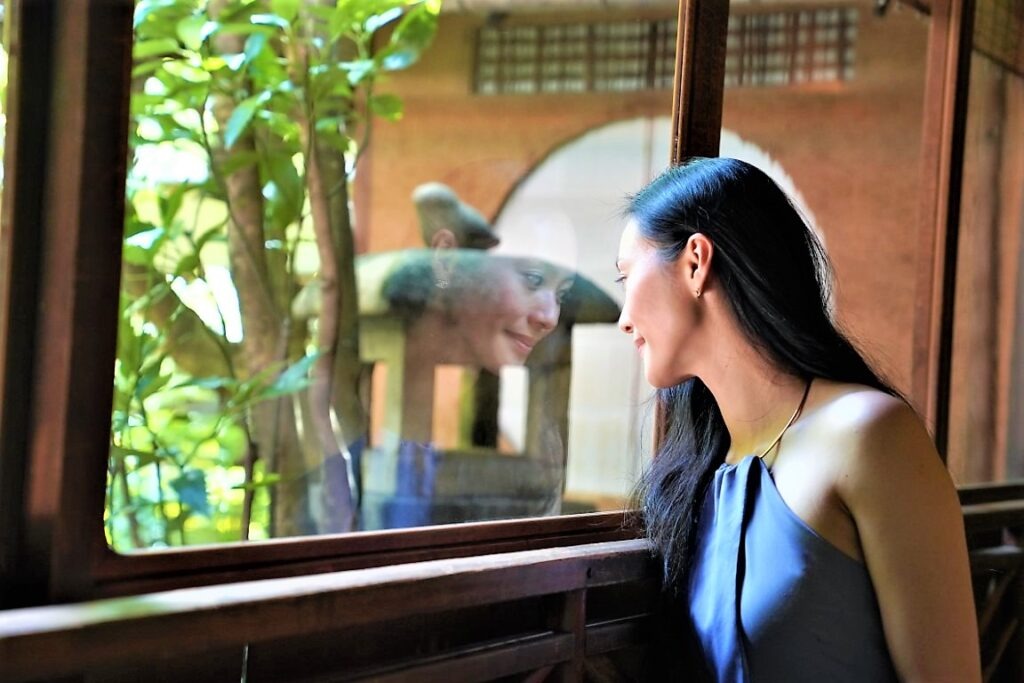
茶庭に隣接する廊下を歩くと、100年以上にわたって賓客をもてなした料亭の格式が感じられる。
The style of every room at SOWAKA is different, but perhaps one of the more unique rooms in the main building is the “Maisonette with Tea Ceremony Room,” offering guests the experience of having a private chashitsu next to the bedroom.
SOWAKAの客室はそれぞれ趣きが異なりますが、本館の中でも特にユニークなのが「メゾネット茶室付」という客室です。
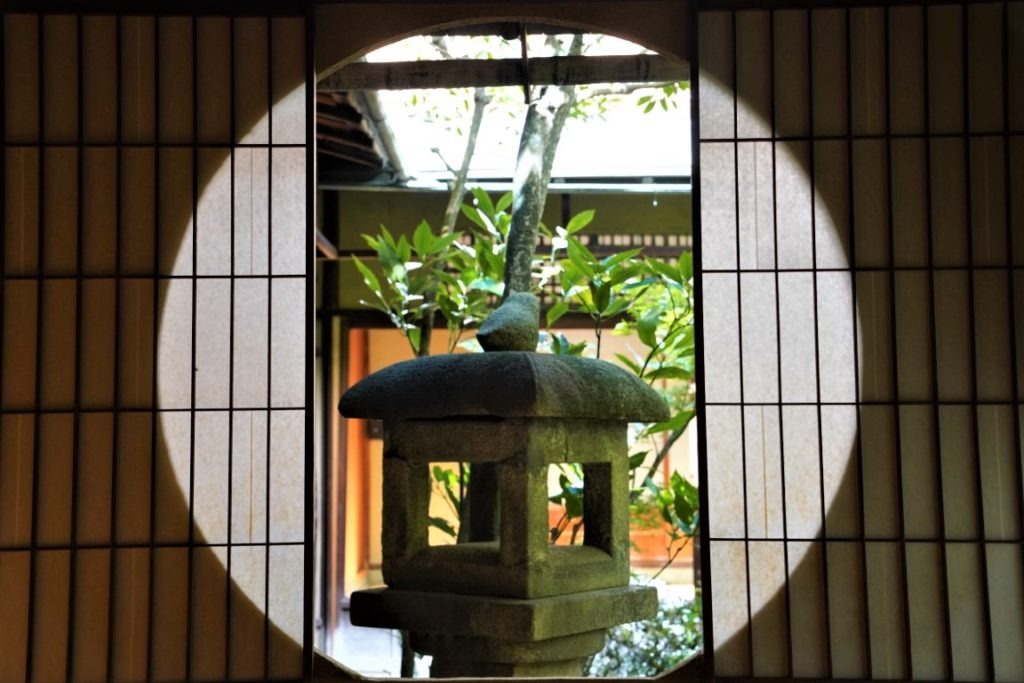
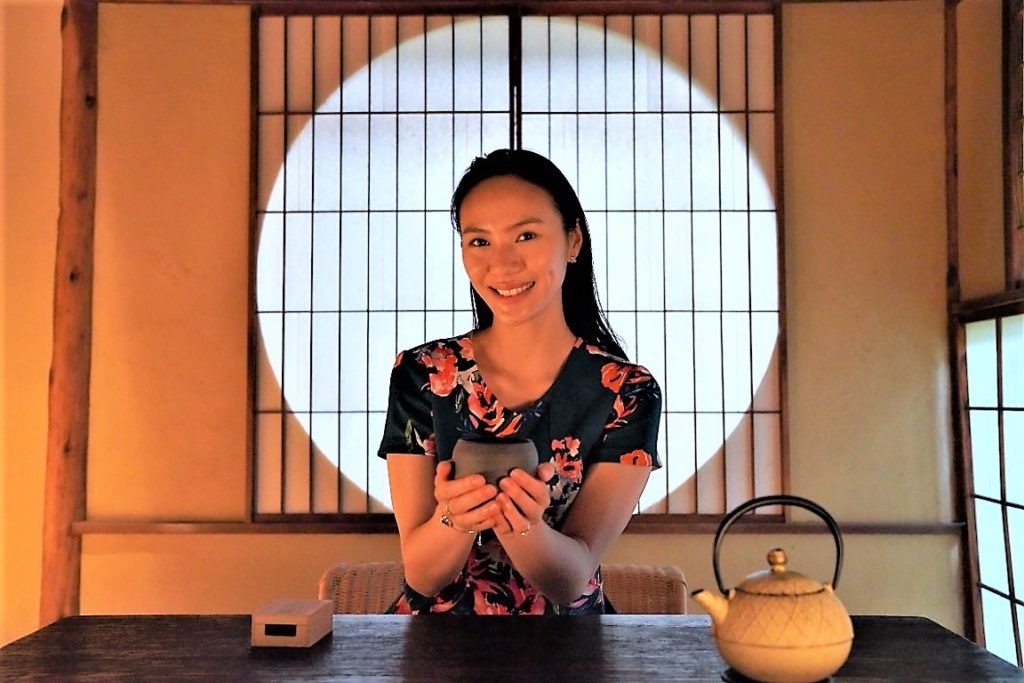
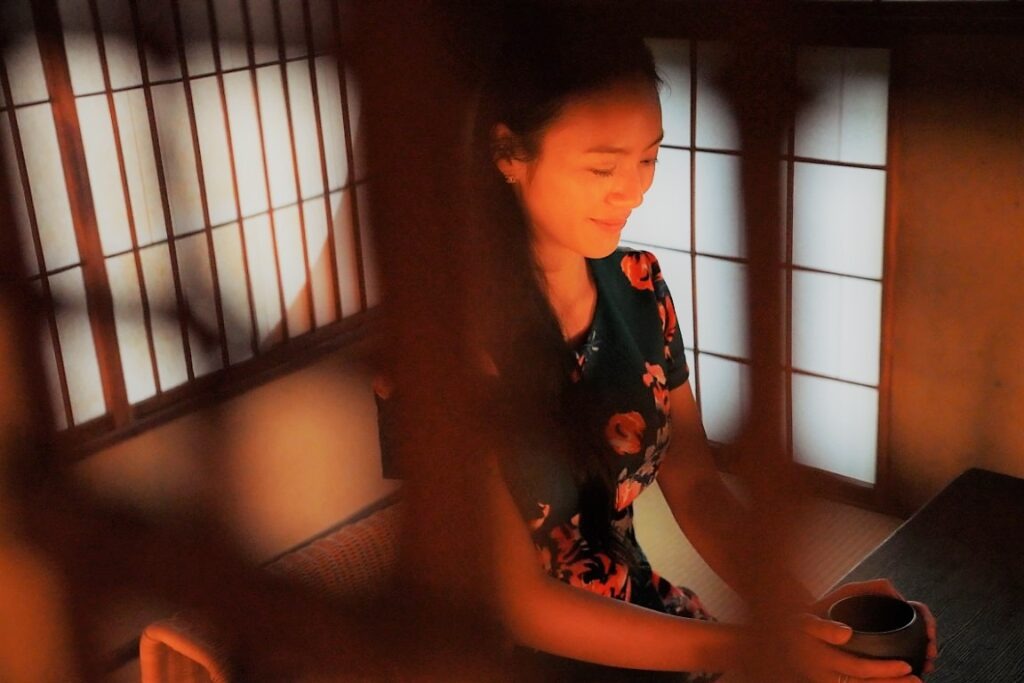
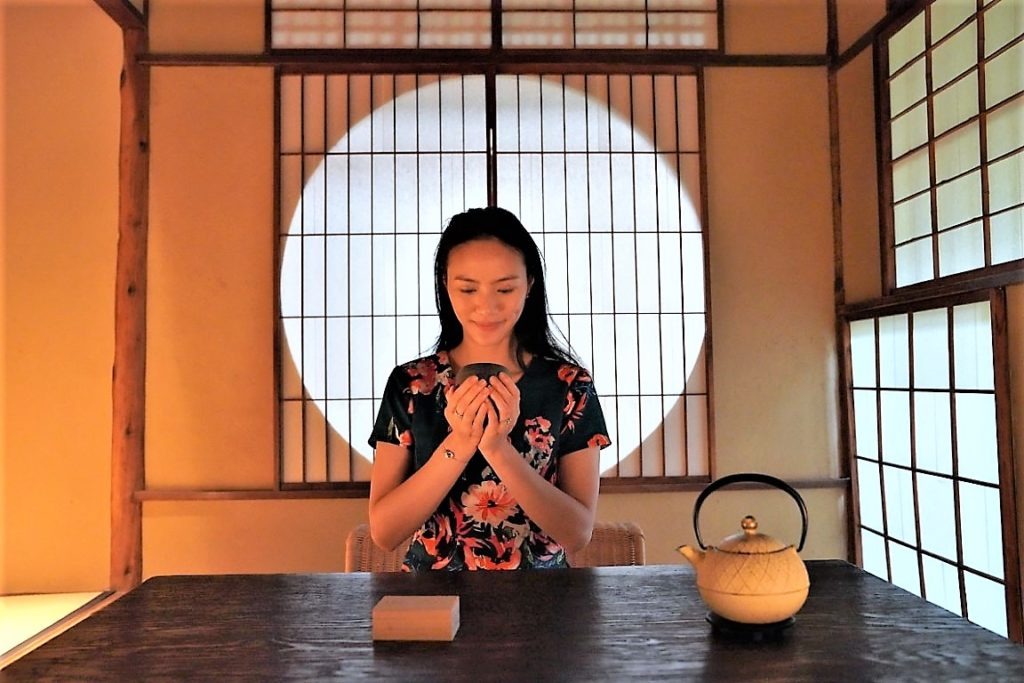
プライベートな茶室でお茶を楽しみました。実際にお茶会を行うときには、ゲストは庭を通って、私の左側にある横の扉から部屋に入る必要があります。
On the second floor of the maisonette, guests can take a Japanese-style bath and then cool off in the tatami room next to it (originally called the “Hyotan Gourd Room”). I am not sure why it was named as such, but it might have to do with how “hyotan” gourds have been considered symbols of good luck since ancient times in Japan.
メゾネットの2階には、日本式のお風呂があり、その隣にある畳の小部屋(元は「ひょうたんの間」と呼ばれました)でお風呂上りに涼んでいただくことができます。なぜ、このような名前がついたのかはわかりませんが、古来、ひょうたんが縁起の良いものとされてきたことと関係があるのかもしれません。
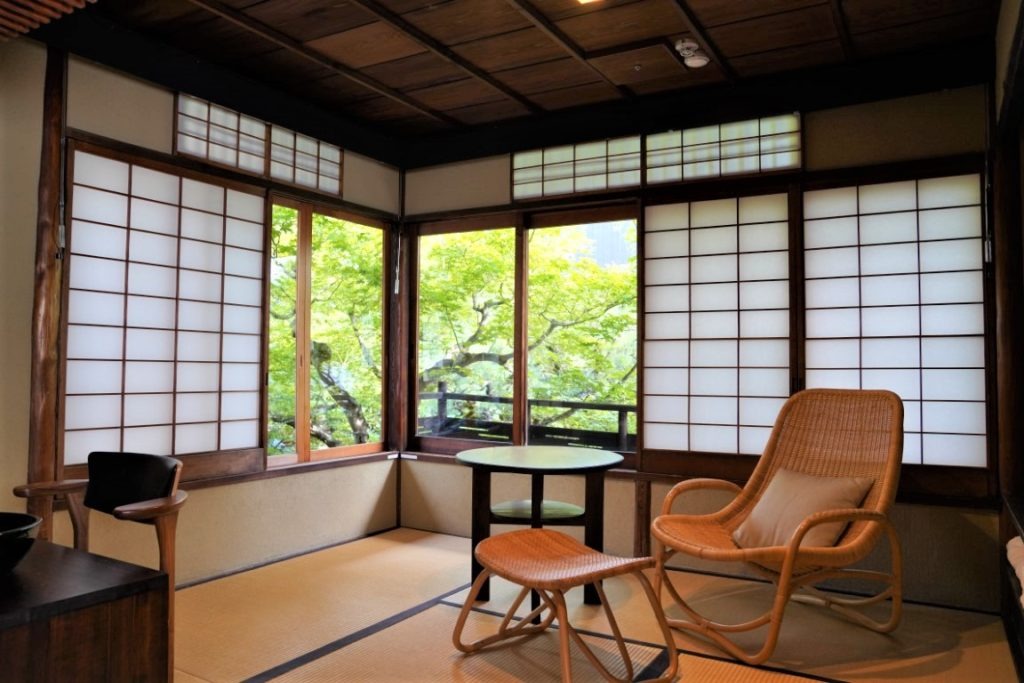
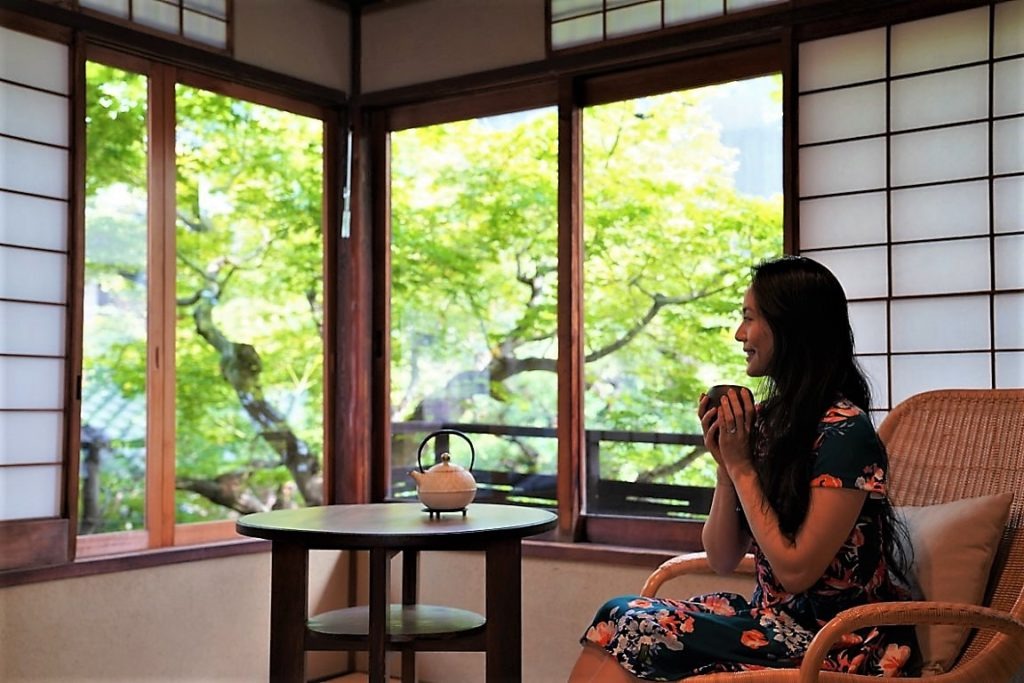
外の庭の穏やかな景色を眺めながら、お茶を飲む。
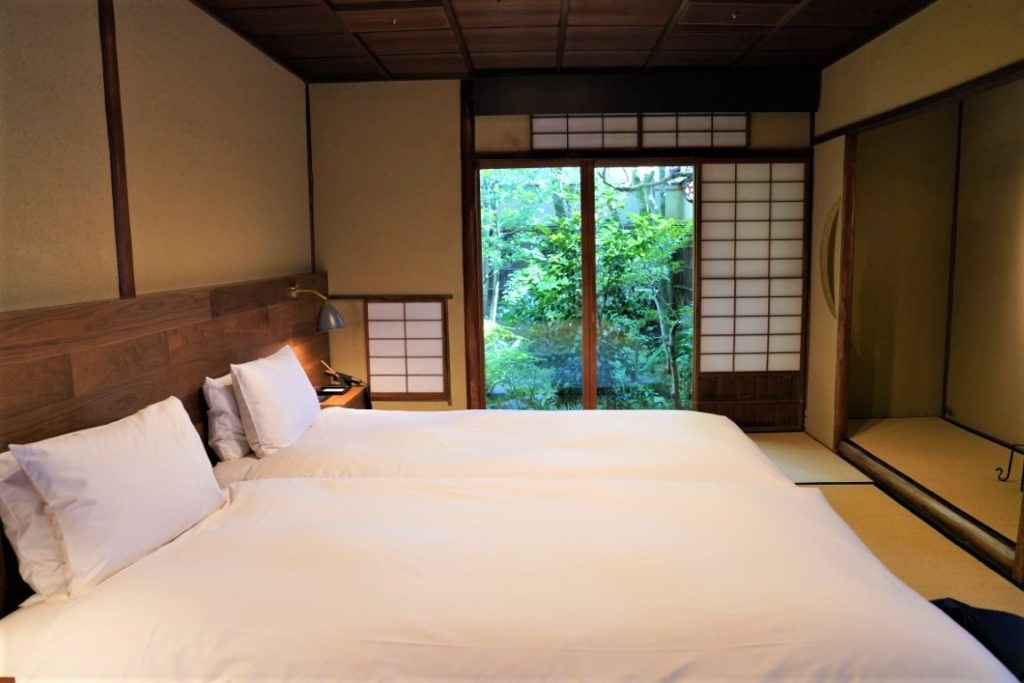
Maisonette with Tea Ceremony Room
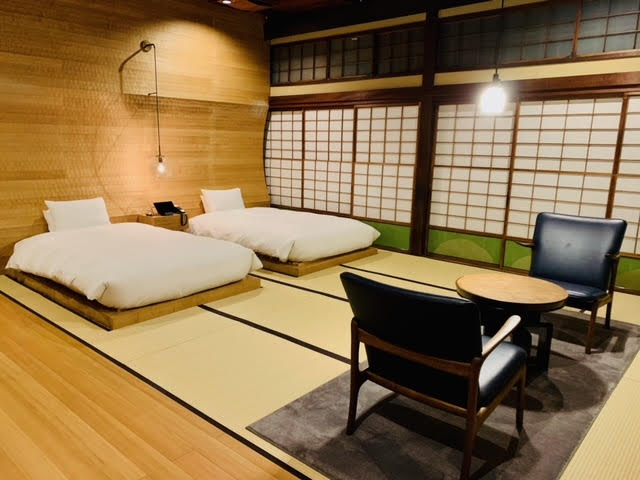
Naguri Wall
本館の竹格子の障子や窓から、緑豊かな茶庭を眺められる暖かいベッドルーム。
Annex Building: Modern Japanese Design Inspired by Sukiya
新館: 数寄屋をモチーフにした和モダンのデザイン
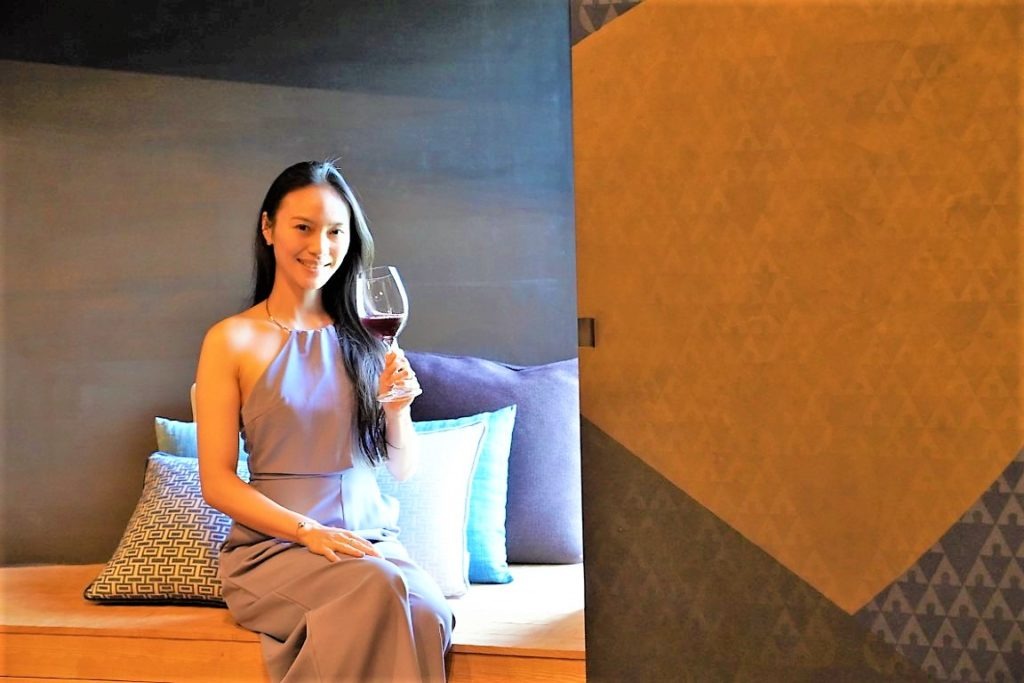
The Annex building was newly built in March 2019, and features modern Japanese design inspired by the traditional sukiya architectural style. Both the main and annex buildings of Sowaka were designed by Shigenori Uoya, an award-winning Kyoto architect who has made a name for himself converting old machiya houses into hotels and townhouses with atrium gardens.
Similar to the main building, all guest rooms in the annex building are unique and spaciously laid out so that no two rooms are adjacent to each other, providing guests privacy in their rooms. I stayed in Room 211, the “Courtyard View Bath Higashiyama View” room. This room was extra spacious, seemingly augmented with a sloped ceiling that hits 3.7m at its highest point.
新館は2019年3月に新築され、伝統的な数寄屋建築の様式にインスパイアされた和モダンなデザインが特徴です。「そわか」の本館・新館ともに、古い町家を吹き抜けや庭園のあるホテルや町家に改装し、数々の受賞歴を持つ京都の建築家、魚谷繁礼氏が設計を担当しました。
本館同様、新館の客室も個性的で、2つの部屋が隣接しないようにゆったりとレイアウトされており、客室でのプライバシーが確保されています。私が宿泊したのは、211号室の「坪庭ビューバス東山ビュー」です。この部屋は広々としていて、一番高いところでは3.7mにもなる勾配天井でさらに広さを増しているようです。
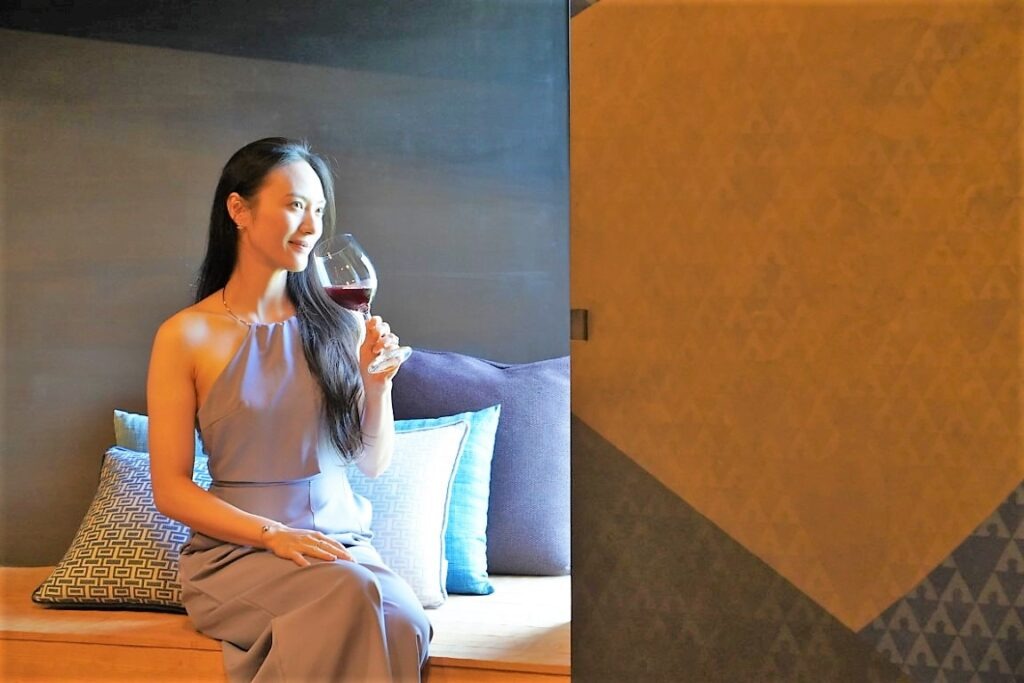
片持ち梁の出窓からは、祇園の路地裏をのぞくことができる風情のある眺望が楽しめます。
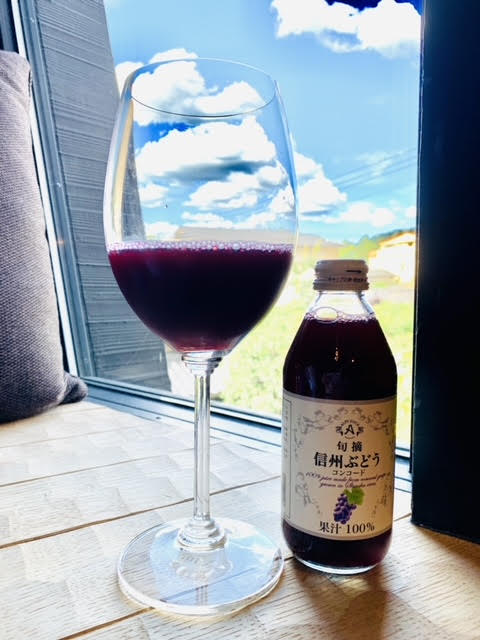
グラスワインやミニバーのコールドプレス信州ぶどうジュースと一緒にお楽しみください。

また、檜風呂では、祇園の瓦屋根の向こうに広がる優雅な緑と東山を眺めながら、ゆったりとくつろぐことができます。

デジタルノマドやワーケーション愛好家にとって、広い部屋と高速無線WIFIは、仕事をするのにも最適でした。
The Restaurant: La Bombance Gion
レストラン: ラ・ボンバンス祇園
SOWAKA’s restaurant “La Bombance Gion” is the third installment of the award-winning “La Bombance” in Nishi-Azabu, Tokyo. For more than a decade, Michelin-starred La Bombance has enticed gourmet connoisseurs through its dishes. La Bombance Gion uses locally sourced ingredients to create seasonal menus that creatively reimagine traditional Kyoto-style kaiseki ryori (Japanese haute cuisine).
「そわか」のレストラン「ラ・ボンバンス祇園」は、数々の賞を受賞した東京・西麻布の「ラ・ボンバンス」の第3弾です。ミシュランの星を獲得した「ラ・ボンバンス」は、10年以上にわたり、その料理でグルメ通を魅了してきました。ラ・ボンバンス祇園では、地元産の食材を使い、伝統的な京懐石料理をクリエイティブにアレンジした季節のメニューを提供しています。
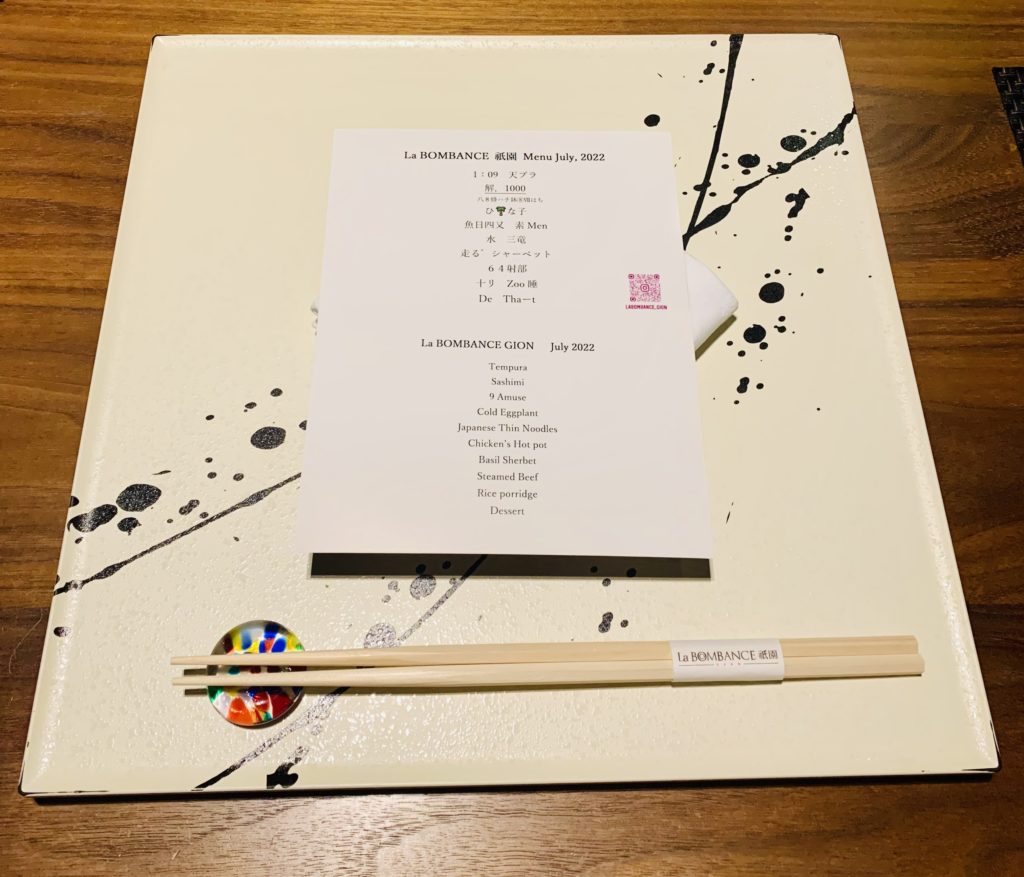
ディナーコースのメニューは毎月変わります。日本語のメニューは実は「なぞなぞ」で書かれていて、ゲストは出てくる料理を当てなければならないのです!残念ながら、私の日本語では最初の答え以外は当てることができません。誰か他の答えを説明できる人がいたら、ぜひ教えてください!
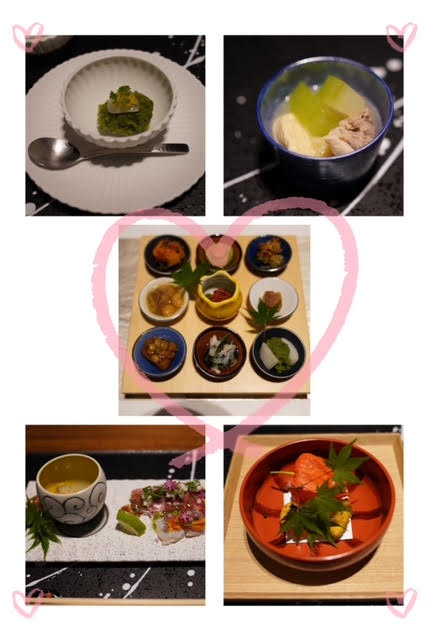
「ラ・ボンバンス祇園」の看板メニューは、「数寄 」の精神に沿った遊び心あふれる9皿の「9 Amuse」(中)です。
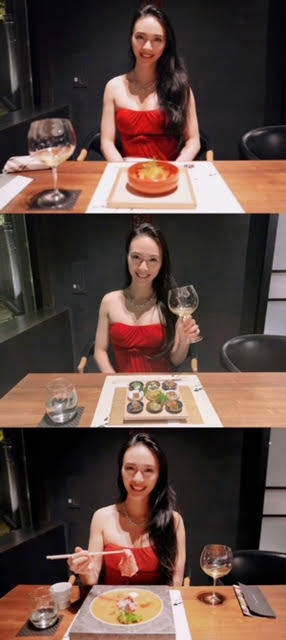
「ラ・ボンバンス祇園」でディナーを楽しみました。私のお気に入りは蒸ししゃぶしゃぶで、トリュフ塩やシェフ秘伝のソースなど、味わい深いディップがたくさん付いていました。
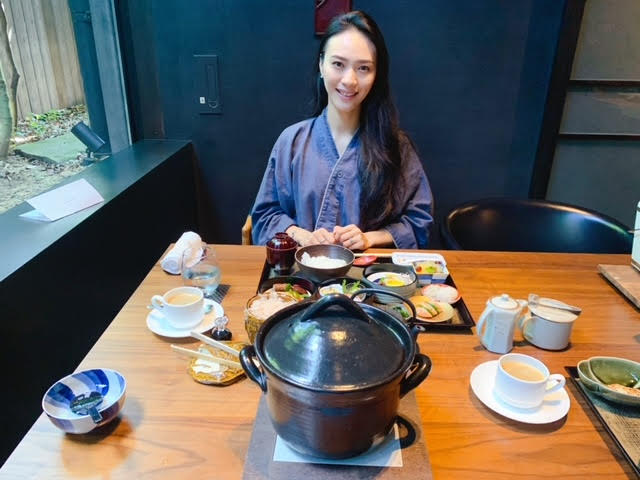
朝食は、和食と洋食のどちらかを選ぶことができました。どちらも美味しかったのですが、個人的には洋食の朝食についていた炭火焼きが美味しかったと思いました!

和食の朝食が充実しています。

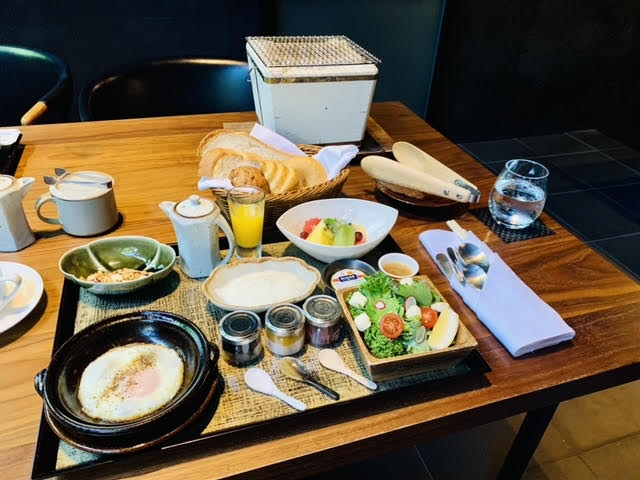
洋食の朝食には炭火コンロが付いていて、焼きたてのパンをトーストすることができます。
Last Reflections: A Deep Connection to Kyoto’s History, Architecture, Traditional Culture, and Local Products
最後に。。。京都の歴史、建築、伝統文化、特産品との深いつながり
Staying at SOWAKA was like visiting a sophisticated museum of the architectural culture and history of Japan. The name “Sowaka”” comes from a Sanskrit blessing meaning “may there be happiness,” often spoken at the end of Buddhist sutras that have been chanted in the numerous temples of Kyoto for centuries, and it is befitting that the hotel strives to bless visitors with happiness and tranquility in the heart of one of the busiest districts of Kyoto.
What impressed me the most was SOWAKA’s dedication to preserving the cultural heritage of the original 100-year-old building and support Kyoto’s traditional artisans and products made by local craftsmen. When carpenters worked on the restoration, they selected the materials carefully to preserve the original materials and carpentry, even going to lengths such as mixing new clay with the original clay in order to maintain the historical integrity of the clay walls.
「そわか」に滞在することは、日本の建築文化と歴史に関する洗練された博物館を訪れるようなものでした。ホテル名の「そわか」は、京都の寺院で何世紀にもわたって唱えられてきた仏教のお経の最後によく使われる「幸せがありますように」という意味のサンスクリット語の祝福に由来しており、京都で最もにぎやかな街の中心で訪れる人々に幸せと静けさを与えようとするホテルとしてふさわしいと思います。
私が最も感銘を受けたのは、築100年の建物の文化遺産を守り、京都の伝統的な職人や地元の職人による製品を支援する「そわか」の献身的な姿勢です。大工さんが修復作業をする際、オリジナルの素材や大工仕事を残すために材料を厳選し、土壁の復元で昔のままの完成度を保つためにオリジナルの土に新しい土を混ぜるといったことまでしたそうです。
Some other details that I appreciated:
その他に評価できる点がいくつかあります。
Room Wear || 部屋着
The roomwear provided to guests is fashioned after “Samue” (作務衣), the work clothing traditionally worn by Japanese Buddhist monks when engaged in “samu” or labor duty. They were comfortable to lounge and sleep in!
宿泊客に提供される部屋着は、日本の僧侶が作務に従事するときに着る「作務衣」に似せて作られています。寝心地もよく、快適に過ごせました!
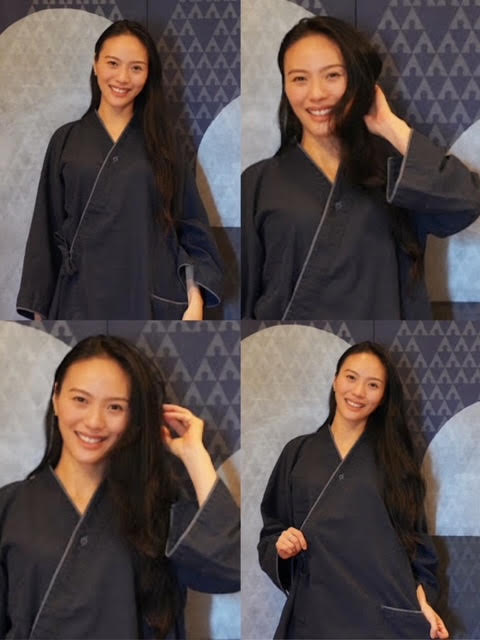
宿泊客に提供される部屋着は、日本の僧侶が作務に従事するときに着る「作務衣」に似せて作られています。
King-Sized Bed || キングサイズのベッド
Those of you who are familiar with traveling in Japan and staying at Japanese ryokans or hotels will know that King size beds are a rarity, if not almost non-existent (two twin beds pushed together would most likely be the closest thing you will get). Hence, I really appreciated that SOWAKA’s Annex building offered proper, densely cushioned King-sized beds made with high-grade natural wool such as cashmere and camel hair! I was even more surprised to learn that the mattresses are made by Iwata, a futon shop that was established since 1830 in Kyoto’s Sanjo district.
日本の旅館やホテルに宿泊されたことのある方ならご存知だと思いますが、日本ではキングサイズのベッドはほとんどありません(ツインベッドを2つ押し込んだものが最も近いと思われます)。だから、SOWAKAの別館には、カシミアやキャメルヘアなどの高級天然ウールを使った、密度の高いクッションのキングサイズベッドが用意されていて、本当にありがたかったです。カップルにぴったりだと思います。さらに驚いたのは、そのマットレスが1830年創業の京都三条にある布団屋「イワタ」のものであることです。

Bath Amenities || バスアメニティ
SOWAKA’s bath amenities are all from Kazurasei Shinise, a family-led business which has been selling beauty products and hair accessories since 1861. Kazurasei Shinise’s hair care and skin care products are made with 100% organic camellia oil extracted using the shop’s unique manufacturing method. Camellia oil has been long used as a beauty treatment in Japan, and is one of my personal favorite skincare oils. It is very versatile and can be used for the hair, scalp, face, and body. As it contains as much as 85% oleic acid (a natural moisturizing substance extremely similar to the lipid composition of our human skin, making it easily absorbed), camellia oil can help replenish moisture, fight free radicals, and soothe irritated skin. Many even say that the secret of the Geisha’s porcelain white skin and ink-black hair was camellia oil!
「そわか」のバスアメニティは、1861年から家族で美容品やヘアアクセサリーを販売している「かづら清老舗」のものです。独自の製法で抽出したオーガニック椿油を100%使用したヘアケア、スキンケア用品です。椿油は、日本で古くから美容に使われてきたオイルで、個人的にも好きなスキンケアオイルのひとつです。髪、頭皮、顔、体など、あらゆるところに使える万能オイルです。オレイン酸(人間の皮膚の脂質組成に極めて近い天然保湿物質で、吸収されやすい)を85%も含む椿油は、水分を補い、フリーラジカルと戦い、肌の炎症を鎮める効果があるのです。芸者の白い肌と黒い髪の秘密は、椿油にあったという説もあるほどです。
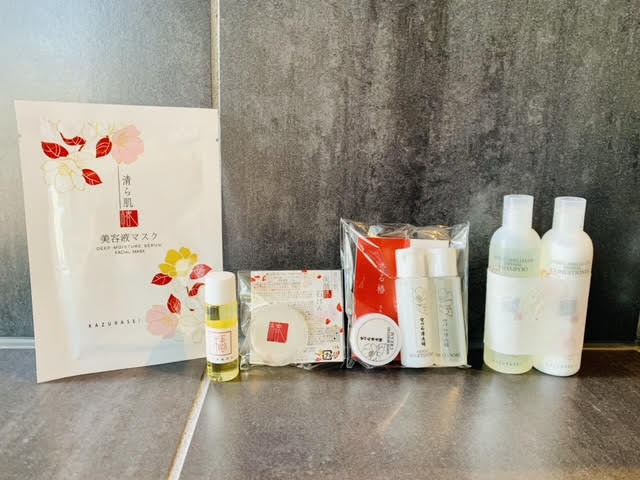
バスアメニティはもちろん、フェイスマスクや純椿油のミニボトルまで、充実のラインナップを楽しめます!
SOWAKA provides an elegant balance between restoring the rustic charm of the old machiya building while preserving its architectural history, providing guests an authentic, immersive experience to connect with both traditional and modern Kyoto at the same time. The hotel showcases the beauty of antiquated things, intertwined with elements of imaginative (re)design inspired by the contemporary era.
「そわか」は、建築の歴史を守りながら古い町屋の素朴な魅力を復元することで、お客様に伝統的な京都と現代の京都を同時につなぐ、肌で感じる体験をしていただけるよう優雅なバランスをとっています。このホテルでは、古いものの美しさと、現代からインスピレーションを得た想像力豊かな(リ)デザインの要素がうまく絡み合っています。
Sowaka Hotel in Kyoto
Interested in staying at SOWAKA during your next visit to Kyoto? Contact me and I would be happy to connect you! 🙂
Website:
Address:
480 Kiyoi-cho, Higashiyama-ku, 605-0821 Kyoto
京都の「そわか」
次回の京都訪問の際、SOWAKAでの宿泊にご興味がおありですか?ご連絡いただければ、喜んでお繋ぎしますよ。:)
Webサイト:
住所:
〒605-0821 京都市東山区下河原通八坂鳥居前下ル清井町480






